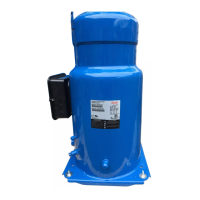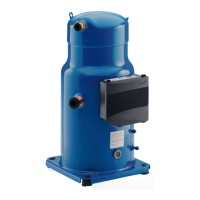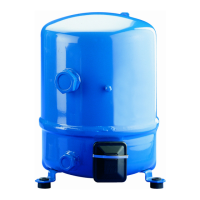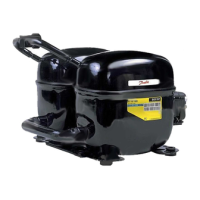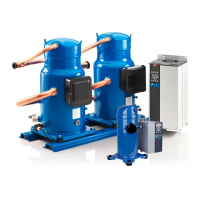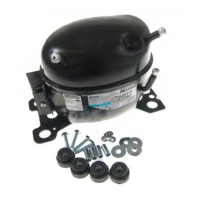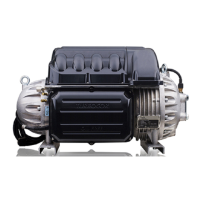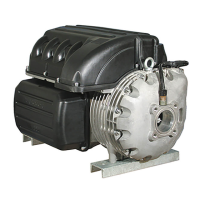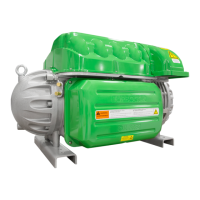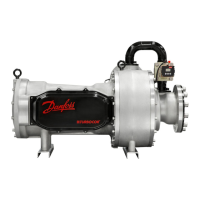APPLICATION GUIDELINES
28
FRCC.PC.007.B5.02
If the evaporator lies above the compressor, as
is often the case in split or remote condenser
systems, the addition of a pump-down cycle is
strongly recommended. If a pump-down cycle
were to be omitted, the suction line must have a
loop at the evaporator outlet to prevent refriger-
ant from draining into the compressor during off -
cycles.
If the evaporator were situated below the com-
pressor, the suction riser must be trapped so as
to prevent liquid refrigerant from collecting at the
outlet of the evaporator while the system is idle,
which would mislead the expansion valve’s sen-
sor (thermal bulb) at start-up.
SYSTEM DESIGN RECOMMENDATIONS
The working pressure in systems with R410A is
about 60% higher than in systems with R22 or
R407C. Consequently, all system components and
piping must be designed for this higher pressure
level.
Proper piping practices should be employed to
ensure adequate oil return, even under minimum
load conditions with special consideration given
to the size and slope of the tubing coming from
the evaporator. Tubing returns from the evapora-
tor should be designed so as not to trap oil and to
prevent oil and refrigerant migration back to the
compressor during off -cycles.
In systems with R410A, the refrigerant mass fl ow
will be lower compared to R22/R407C systems.
To maintain acceptable pressure drops and ac-
ceptable minimum gas velocities, the refrigerant
piping must be reduced in size compared to R22
/ R407C systems. Take care not to create too high
pressure drops or since in R410A systems the neg-
ative impact of high pressure drops on the system
effi ciency is stronger than in R22/R407C systems.
Piping should be designed with adequate three-
dimensional fl exibility. It should not be in contact
with the surrounding structure, unless a proper
tubing mount has been installed. This protection
proves necessary to avoid excess vibration, which
can ultimately result in connection or tube failure
due to fatigue or wear from abrasion. Aside from
tubing and connection damage, excess vibration
may be transmitted to the surrounding structure
and generate an unacceptable noise level within
that structure as well. For more information on
noise and vibration, see the section on: «Sound
and vibration management».
Successful application of scroll compressors is
dependent on careful selection of the compres-
sor for the application. If the compressor is not
correct for the system, it will operate beyond the
limits given in this manual. Poor performance, re-
duced reliability, or both may result.
Essential piping design
considerations
General
Suction lines
HP
4 m/s or more
0.5% slope
To condenser
max. 4 m
max. 4 m
0.5% slope
U-trap, as short as possible
U-trap
4m/s or more
U trap, as short as possible
Evaporator
LP
8 to 12 m/s
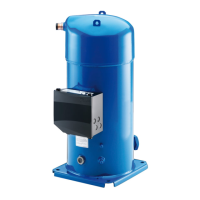
